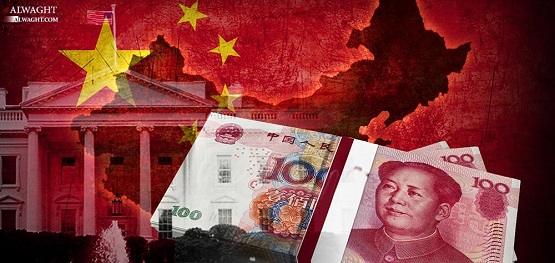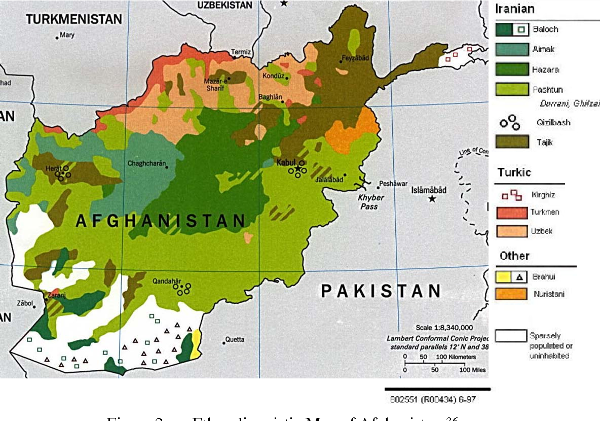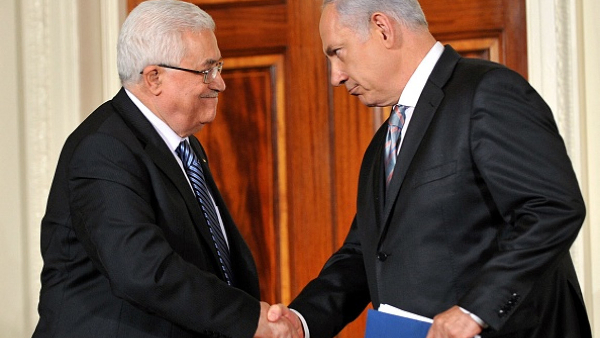The US and China, unlike their massive trade relations, have chilly and in many cases tense ties when it comes to the politics. Behind the diplomatic smiles of the Chinese and American leaders when meeting each other lies a huge world of competition and tensions which sometimes they are not afraid to talk about. Talking to the country’s steel and aluminum companies’ CEOs, the US President Donald Trump has recently told of waging a trade with some countries, on top of them China, making it clear that although Washington is not fighting a military war against Beijing, a fierce trade war against Asia’s heavyweight is underway.
In Trump’s eyes, Beijing is using “unfair” trade methods in dealing with its partners. For example, the Chinese government presses the American companies to share with the Chinese partners their intellectual property as a condition to get into China’s market. During his campaign-time speeches, Trump had threatened to impose on the Chinese products imported to the US 35-45 percent tariffs to pressure China to reduce the trade deficit between the two countries. On Thursday, Trump pressed ahead with the imposition of 25 percent tariffs on steel imports and 10 percent for aluminum.
Responding to Trump’s stances, China’s foreign ministry said that it urged Washington to discard the outdated Cold War mentality and view, otherwise it will only hurt itself. But what tools do the Chinese use to protect themselves against the US security and economic threats?
Reciprocal measures
The first reaction to Trump’s announcement of starting a trade war against China is taking tit-for-tat steps. A look at the two sides’ economic status makes it clear that the American leader’s steps are not catastrophic to China majorly because the US need for China is more than Beijing’s need for Washington.
Twenty years ago, the situation was different from now. China was yet to reach such a level of economic development. It zealously sought to get the Western tech secrets and production methods. But now China has made a splash when it comes to the technological growth, and can get from suppliers outside the US whatever it needs.
On the other side, China has relatively reduced reliance on the American market, and this will possibly continue to happen. This should be tied to its economic growth model which relies less on exports and more on domestic consumption. When calculated using the value-added scale, the Chinese exports to the US only account for 3 percent of the nation’s gross domestic product (GDP).
China itself is a huge market to which the US can hardly close its eyes. The Chinese consumers by the end of 2015 bought 131 million Apple’s products. This figure for the same year in the US markets was 110 million devices. Apple makes up only a small part of the US exports to China. The plane maker Boeing, which has added 150,000 job opportunities to the US market, has announced that in the upcoming two decades, China will buy 6,810 passenger planes. This means the American company has a $1 trillion market to seize.
China is also a big market for the US agricultural products. $21.4 billion of the US products were consumed in China in 2016, reflecting the tremendous US need for the Chinese markets. So, reciprocal slaps on the American agricultural exports can easily send a message of Beijing’s discontentment with the anti-Chinese trade limits to the American leaders. In the initial days of the presidency of the former President Barack Obama, Beijing leaders raised tariffs of US car and chicken exports to China to respond to Washington’s imposing new tariffs on the Chinese rubber tire exports.
The US tariff rise will automatically draw anti-Washington fines of the World Trade Organization (WTO), and it could even lead to its collapse, something that if happens can be tragic to the US business and employment.
China’s cheap labor force, a trump card against the US
China is known for its cheap labor force as well as replica products. It is severely hard for the US, a country where the average monthly payment is $3,000, to race against China, where the maximum pay is $950. China has big potentials in the form of capitals and cheap workers enabling it to easily reverse engineer the foreign technology and products.
This has been helpful to China’s economic growth, transforming the Asian nation into a global factory. The US, of course, finds it hard to respond to the low pay challenge. It may spark some tensions in the US-China relations but at the end of the road, the Americans have nothing in hand to take effective actions. After all, the American leaders neither can reduce American worker’s salaries nor can press the Chinese to raise worker’s payment. In this situation, it is natural that the US businesspeople find it interestingly beneficial to transfer their businesses to China, where the production expenses are competitively low.
China’s persistent economic boost
Since the 1980s, the Chinese economy has been extraordinarily on the track of growth. The Guardian newspaper in a report on the Chinese growth noted that in 1980, the country’s GDP hit $202 billion. The same figure rose to $390 billion in 1990. It kept strongly snowballing to reach $1198 billion in 2000, $6900 billion in 2011, and $11700 billion in 2016.
During these years, it never experienced deficit, with the annual growth rate fluctuating between 4 and 15 percent, mainly benefiting from the privilege of low production costs and cheap workforce which make China an attractive production destination.
In such conditions, the US naturally fails to resist to the Chinese economic power and the will to unseat it as a top global economic power. The Western sides along with the US set up various roadblocks ahead of China in the global markets, including the discriminatory trade measures against Beijing, which have proved to be ineffective so far. Some economists argue that fast and high-rate growth since the 1980s signals that anti-China economic policies have been a total failure.
Since 2015, the US growth rate hardly transcended 3.2 percent. In the same period, China’s economy has not witnessed less than 6.2 percent growth.
Manipulation of China’s currency
Amid fierce economic fight between the two economic heavyweights, the US accuses China of purposely devaluing its currency Yuan against the US dollar.
Devaluation of the national currency is a trick used by some countries to bolster their exports. When the domestic money loses price against the dollar, the local producers will be more interested to export their goods rather than sell them at home. This tactic, in turn, brings into the country further dollars.
Beijing leaders have repeatedly used this method to encourage further exports. In 2012, for instance, Chinese officials in a surprising move reformed the Yuan exchange rate and stunned the global financial markets, and the US, China’s biggest trade partner, sustained the largest harm. At the time, People’s Bank of China reduced the Yuma value 1.6 percent, arguing that high price of the national currency harmed the nation’s exports by raising the prices of the products. PBC argued that high currency price pressed down the exports by 8.3 percent.
Keeping the Yuan low beside encouraging exports from China reduces the interest in imports to the country. Businessmen from the US and other countries also will lose the capability to send their products to China. Such measures make acceptable to China a trade balance in which the exports outstrip the imports by a huge margin.
Meanwhile, reciprocal devaluation of the American dollar will never serve the US interests due to the global value of this currency. Under the current circumstances, Washington simply finds its hands tied in a currency war against Beijing.
LINK: https://www.ansarpress.com/english/9569
TAGS:































 Violation of the sovereignty and rights of afghan citizens by America
Violation of the sovereignty and rights of afghan citizens by America




